|
Books Should Be Free Loyal Books Free Public Domain Audiobooks & eBook Downloads |
|
|
Books Should Be Free Loyal Books Free Public Domain Audiobooks & eBook Downloads |
|
Fiction |
|---|
|
Book type:
Sort by:
View by:
|
By: Edward S. Ellis (1840-1916) | |
|---|---|
 Steam Man of the Prairies
Steam Man of the Prairies
Ethan Hopkins and Mickey McSquizzle-a "Yankee" and an "Irishman"-encounter a colossal, steam-powered man in the American prairies. This steam-man was constructed by Johnny Brainerd, a teenaged boy, who uses the steam-man to carry him in a carriage on various adventures. | |
By: John Addington Symonds (1840-1893) | |
|---|---|
 A Problem in Modern Ethics
A Problem in Modern Ethics
“Society lies under the spell of ancient terrorism and coagulated errors. Science is either wilfully hypocritical or radically misinformed.” John Addington Symonds struck many an heroic note in this courageous (albeit anonymously circulated) essay. He is a worthy Virgil guiding the reader through the Inferno of suffering which emerging medico-legal definitions of the sexually deviant were prepared to inflict on his century and on the one which followed. Symonds pleads for sane human values in... | |
By: Charles Norris Williamson | |
|---|---|
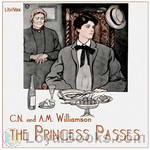 The Princess Passes
The Princess Passes
An American heiress nicknamed the Manitou Princess (after her daddy’s richest silver mine) is devastated to find that her fiancé only loves her money, so she does what anyone might do: she bolts for Europe, dons male attire and sets out on a walking tour of the Alps, passing as a teenage boy. Though professing hatred of all men, she soon falls in with a just-jilted English lord, aptly named Monty Lane, who is attempting to walk off a broken heart of his own. The Princess Passes presents the ups and downs of their alpine relationship through the unpenetrating eyes of Lord Lane... | |
By: Amelia Opie (1769-1853) | |
|---|---|
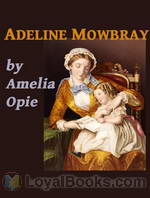 Adeline Mowbray
Adeline Mowbray
Everybody makes mistakes, and everything has a price. This novel describes, according to it's name, the life of Adeline Mowbray, full of everything: sorrow, happiness, falsehood, truth, kindness, and mistakes. This novel is an exploration of the human heart. Be prepaired for a strong and enjoyable read. | |
By: Timothy S. Arthur (1809-1885) | |
|---|---|
 Off-hand Sketches
Off-hand Sketches
The reader cannot but smile at some of the phases of life presented in this volume. Yet the smile will, in no case, the author thinks, be at the expense of humanity, good feeling, or virtue. Many of the incidents given, are facts embellished by a few touches of fancy. In all, lessons may be read that some, at least, will do well to lay to heart. | |
By: Dame Rose Macaulay (1881-1958) | |
|---|---|
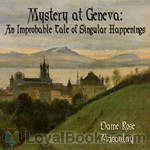 Mystery at Geneva: An Improbable Tale of Singular Happenings
Mystery at Geneva: An Improbable Tale of Singular Happenings
Henry Beechtree, a newspaper correspondent for the British Bolshevist, is covering the latest otherwise sleepy session of the League of Nations in Geneva, when the newly elected President – a member of the Norwegian delegation – disappears mysteriously, adding some badly needed ‘spice’ to Henry's assignment. (Introduction by Cathy Barratt) | |
By: Rex Beach (1877-1949) | |
|---|---|
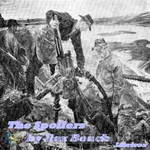 The Spoilers
The Spoilers
MANUAL OF SURGERY, OXFORD MEDICAL PUBLICATIONSBY ALEXIS THOMSON, F.R.C.S.Ed.PREFACE TO SIXTH EDITION Much has happened since this Manual was last revised, and many surgical lessons have been learned in the hard school of war. Some may yet have to be unlearned, and others have but little bearing on the problems presented to the civilian surgeon. Save in its broadest principles, the surgery of warfare is a thing apart from the general surgery of civil life, and the exhaustive literature now available on every aspect of it makes it unnecessary that it should receive detailed consideration in a manual for students... | |
By: Percy Fitzpatrick | |
|---|---|
 The Outspan: Tales of South Africa
The Outspan: Tales of South Africa
Six poignant short stories reminiscent of life as a transport rider in the Transvaal veld in the days of the gold rush in South Africa at the end of the 19th century. From an early age Fitzpatrick believed that life should be enjoyed to the full and his honest and often moving style of writing leaves one richer for having known him. | |
By: Mary Augusta Ward (1851-1920) | |
|---|---|
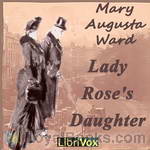 Lady Rose's Daughter
Lady Rose's Daughter
"Julie Le Breton enchants almost everyone around her with her smart, charm, and excellent manners. She almost belongs to the English highest nobility, but just almost… Her parents, 2 aristocrats who ran away from England in order to be together, could never marry - because her mother was married to someone else. Therefore, she is forced to work for the cruel Lady Henry Delafield, who hates her. She has a few good friends, amongst whom are 2 admirers… And that is only the beginning. This is a compelling drama, set mostly in England, among the English aristocracy... | |
By: Louis Joseph Vance (1879-1933) | |
|---|---|
 The Lone Wolf
The Lone Wolf
The Lone Wolf is the first of eight books in a series featuring the jewel thief turned private detective Michael Lanyard. With his identity betrayed and the police on his heels, he must fly from Paris, which is made much more difficult by his self-imposed duty to take care of the beautiful Lucia, who has a dark secret of her own...A large number of movies have been based on the books. | |
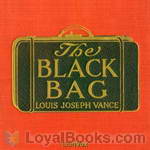 The Black Bag
The Black Bag
Mr. Philip Kirkwood, a not so successful painter, receives a visitor from his home town in America, who wants him to do him an unspecified favor, but Kirkwood doesn't trust him and sends him away. That night, he sees the stranger dine with his beautiful daughter. In order to protect the girl, the stranger confesses to Kirkwood that he expects to be arrested upon leaving the restaurant. Kirkwood agrees to take care of the girl, but when he brings her home, he knows that she is in danger and that there must be a mystery attached. He decides to protect the girl... | |
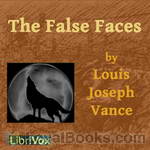 The False Faces
The False Faces
This is the second book in the Lone Wolf series. Michael Lanyard had turned his back on his career as gentleman-thief and started a respectable life, when World War I wrecks his life. With his family dead and the spy Ekstrom alive after all, his special skills as the Lone Wolf are needed once more, this time in the war behind enemy lines. But again, there is a mysterious woman involved... | |
By: John Leighton (1822-1912) | |
|---|---|
 Christmas Comes but Once a Year
Christmas Comes but Once a Year
A Christmas tale of John Brown's ghastly family (suburban snobs), Captain Bonaventure de Camp and his equally awful brood (a dubious crew), and poor Soavo Spohf, organist of St. Stiff the Martyr, gifted in musical ability but not blessed in looks or love. No-one could call this a great work of literature, but it definitely raises a few chuckles and it also offers a fascinating glimpse into Christmas festivities and social mores in well-to-do households in the mid-19th century. (Introduction by Ruth Golding) | |
By: Asa Don Dickinson (1876-1960) | |
|---|---|
 Good Cheer Stories Every Child Should Know
Good Cheer Stories Every Child Should Know
This charming book has many stories that deal mostly with the holiday of Thanksgiving, perfectly suited for family listening and reading. and gathers in one volume tales of tasty turkeys, festive parties, generous gestures, and holiday cheer. The stories featured include works by such writers as Harriet Beecher Stowe, George Eliot, Nathaniel Hawthorne, and others. So if you want to listen to some great stories that bring out gratitude for life and a thanksgiving attitude, here are a bunch of the best. | |
By: George Washington Cable (1844-1925) | |
|---|---|
 Bonaventure, A Prose Pastoral of Acadian Louisiana
Bonaventure, A Prose Pastoral of Acadian Louisiana
This is a gentle, delightful story of life and love on the bayoux of Acadian Louisiana during the latter half of the 19th century. Bonaventure is a Creole raised among the Acadians. He loves learning, and through his calling as a teacher, and his own unique force of character, comes to have a lasting effect on the people around him. A word of warning: This story has occasional references to Jews and African Americans that the modern mind finds offensive. They are retained here in the interest of preserving the original text. | |
By: Harriet T. Comstock (1860-1925) | |
|---|---|
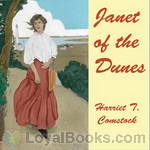 Janet of the Dunes
Janet of the Dunes
Known primarily for her children's books, Harriet T. Comstock would occasionally depart from that genre and showcase her writing talent in adult prose as well. Janet of the Dunes is one such departure wherein she masterfully takes us into the lives of the bold men and women who tended those life saving stations along the seaboard which many a ship relied upon for their safety. They were simple people, large of heart and as close-knit as a tiny community can and must ever be, and they, above all else, took their duties very seriously... | |
By: Mary E Wilkins Freeman | |
|---|---|
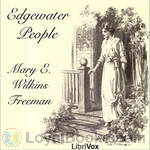 Edgewater People
Edgewater People
A collection of interrelated short stories concerning the townfolk of a few small New England villages at the turn of the last century. | |
By: Sister M. Imelda Wallace, S.L. (1884-?) | |
|---|---|
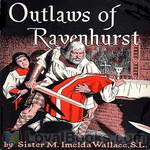 Outlaws of Ravenhurst
Outlaws of Ravenhurst
This exciting historical adventure depicts the last stand of the Gordons - God's "outlaws" - fighting for their Catholic Faith in the early days of the Protestant Revolution in seventeenth-century Scotland. | |
By: Howard R. Garis (1873-1962) | |
|---|---|
 Uncle Wiggily's Adventures
Uncle Wiggily's Adventures
Due to Uncle Wiggily's rheumatism being so very bad, Dr. Possum prescribes a journey to help him move around, have a change of air, and a good long bout of traveling to get more exercise. So Uncle Wiggily packs his valise and sets forth! | |
 Uncle Wiggily in the Woods
Uncle Wiggily in the Woods
Howard Garis, one of the most prolific children's writers of the 20th century, is credited with writing over 1500 Uncle Wiggily stories. In this collection, the loveable old rabbit stays close to home and visits woodland friends. | |
 Uncle Wiggily and Old Mother Hubbard
Uncle Wiggily and Old Mother Hubbard
Uncle Wiggily Longears, an old bunny gentleman now stricken with rheumatism and getting around with a cane, still is quite active. In these stories, he encounters a string of characters from Mother Goose's tales and has adventures that are not quite in keeping with her books!These gentle tales are 7 - 8 minutes each and quite suited to a nightly reading to a small child. (Intro by Mark F. Smith) | |
 Uncle Wiggily's Travels
Uncle Wiggily's Travels
This is the second of 79 Uncle Wiggily books published and contains another selection of bedtime stories from those originally published in the Newark Evening News every day except Saturday for over 40 years. Uncle Wiggily Longears is a loveable rabbit who suffers from rheumatism and has many woodland friends and innocent adventures. | |
 Curly and Floppy Twistytail (The Funny Piggie Boys)
Curly and Floppy Twistytail (The Funny Piggie Boys)
The adventures of two little pig boys and their mom and dad. "Once upon a time, not so very many years ago, in the days when there were fairies and giants and all things like that, there lived in a little house, on the edge of a wood, a family of pigs. Now these pigs weren't like the pigs, which perhaps you children have seen on most farms. No, indeed! They were just the nicest cleanest, sweetest pigs you ever dreamed of—not that pigs on a farm can't be clean, if they want to, but, somehow or other, no one seems to have time to see that they are clean." | |
By: Arthur M. Winfield (1862-1930) | |
|---|---|
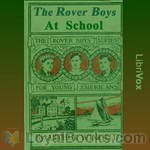 The Rover Boys at School
The Rover Boys at School
First of the famous Rover Boys books by future Hardy Boys creator Edward Stratemeyer (under the pseudonym Arthur M Winfield), this is an introduction to the fun-loving teenage Rover Brothers -- Dick, Tom & Sam. Virtual orphans, they are sent by their prudish Uncle Randolph to a military boarding school and their adventures soon begin! | |
By: Fa'iz El-Ghusein (1883-1968) | |
|---|---|
 Martyred Armenia
Martyred Armenia
This is a first hand account of the Armenian Genocide written by a Syrian who had been a Turkish official for three and a half years. His accounts tell of the worst of humanity, and also of the noblest. The noble include families who courageously support each other in the face of death, and Turks who refuse to follow orders to kill, knowing that they shall be executed themselves for their defiance. | |
By: Miriam Michelson (1870-1942) | |
|---|---|
 In the Bishop's Carriage
In the Bishop's Carriage
Nancy 'Nance' Olden, a young and very pretty woman, is an accomplished liar and thief. Raised in a horrific orphanage, called the Cruelty by its occupants, Nance and her criminal boyfriend, Tom Dorgan, are pulling a con when the book begins. The results of their act propel Nance into a series of events that she could never have imagined. This was Miriam Michelson's first novel and it was considered a 'blockbuster' in its day. Ranked fourth on the list of bestsellers of 1904 by "Publishers Weekly," Michelson's book was a source of controversy due to the dubious ethics and morals of its heroine. | |
By: Byron A. Dunn (1842-1926) | |
|---|---|
 Raiding with Morgan
Raiding with Morgan
It is a fictional tale of cavalry actions during the U.S. Civil War, under General John Morgan. | |
By: Richard Henry Savage (1846-1903) | |
|---|---|
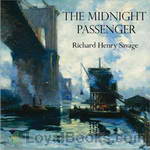 The Midnight Passenger
The Midnight Passenger
Randall Clayton was surrounded by enemies. His father’s business partner had looked after him in the years since his father’s death. But Hugh Worthington’s motives were not altruistic – he had a secret to hide and a scheme to bring to fruition that would make him millions at Clayton’s expense. Clayton’s roommate, Arthur Ferris, had his own schemes, including stealing the affections of Worthington’s daughter away from Clayton. Clayton worked for a pittance in New York, where he was watched day and night by Worthington’s spies, and by the ruthless Fritz Braun, who plotted to rob Clayton of the large deposit that he daily carried for his employer... | |
By: Eva Lecomte | |
|---|---|
 Paula the Waldensian
Paula the Waldensian
Into the home of an interesting but self-centered family in old France comes Paula, a young orphaned cousin, from the little village of Villar, in the Waldensian Valley. Though living very simply, tending cows, goats, sheep and rabbits, Paula has been brought up to know and love the Lord Jesus and read the Scriptures. Her Lord and His Word are the center of her life, and she can no more keep this good news all to herself than she can stop breathing or eating. This causes a good many complications, for her cousins' home was one where "religion" was a forbidden subject, never to be mentioned, and Paula soon found herself forbidden to read her own precious Bible... | |
By: Annie F. Johnston (1863-1931) | |
|---|---|
 The Little Colonel's House Party
The Little Colonel's House Party
Lloyd Sherman, the "Little Colonel", is a girl of eleven whose mother invites three other girls to spend a month with Lloyd in her beautiful home in Kentucky. The children come from very different homes, but fall into the new ways very readily. The account of their escapades will amuse young readers. A bit of disobedience on the part of one spoiled girl leads to something of a tragedy, in which Betty, the nicest of the children, is the sufferer.This series for girls from the early 1900’s, begun... | |
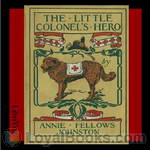 The Little Colonel's Hero
The Little Colonel's Hero
In this sixth volume of “The Little Colonel Series” for girls, Lloyd is surprised with a gift for her twelfth birthday, of a summer trip to Europe. In Geneva she becomes friends with an old Prussian major and his Red Cross dog, a St. Bernard named Hero. Through many adventures, in the end the Little Colonel learns the true meaning of selfless duty. | |
 Little Colonel's Christmas Vacation
Little Colonel's Christmas Vacation
In this delightful story ”The Little Colonel's Christmas Vacation” by Annie Fellows Johnston the Little Colonel, Lloyd Sherman. together with her friends Betty, Kitty and Allison are starting the schoolyear at a new school, Warwick Hall, a Boardingschool for girls in Washington. They find it a wonderful and stimulating place, make many new friends and have many experiences and also adventures there. But Lloyd comes down with high fever shortly before Christmas, and while home on Christmas Vacation she almost breaks down, and the doctor says she must not go back to school but stay at home to regain her health... | |
By: Maria Edgeworth | |
|---|---|
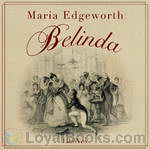 Belinda
Belinda
When Belinda was published in 1801, it became both controversial and popular. Controversial because of the inter-racial marriage presented in the novel, and popular because it's a very good comedy of manners, like Evelina by Fanny Burney. Belinda, like Evelina, is a soft and loving girl of 17, is coming to London with her aunt who directs her action in order to make sure that she'll find a good match. But what will happen if Belinda will fall in love? Will Clarence Hervey, the man she loves, be able to marry her? It seems almost impossible, as he is secretly bringing up another woman to be a perfect wife to him and now, in all honor, he thinks he must marry her... | |
 Castle Rackrent
Castle Rackrent
| |
By: Mildred Aldrich (1853-1928) | |
|---|---|
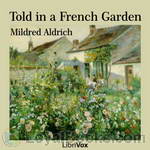 Told in a French Garden
Told in a French Garden
American friends begin to summer in a beautiful French country house when WWI breaks out. They decide not to evacuate as the war encroaches. Their interactions are interwoven by the stories that they take turns telling after dinner each night to stimulate their nightly conversation and distract their thoughts from the war. | |
By: Caroline Lockhart (1871-1962) | |
|---|---|
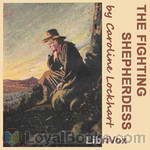 The Fighting Shepherdess
The Fighting Shepherdess
A classic style western written by one of the first female western writers. Caroline Lockhart was a rancher, writer and possibly the first woman to go over Glacier National Parks Swiftcurrent Pass. | |
By: Bradford Torrey (1843-1912) | |
|---|---|
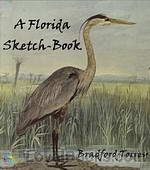 A Florida Sketch-Book
A Florida Sketch-Book
This is a series of late-19th Century essays about Florida’s flora & fauna written by a Massachusetts-based naturalist. | |
By: Anne Wales Abbott ed. (1808-1908) | |
|---|---|
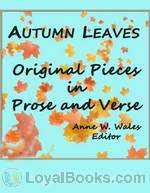 Autumn Leaves, Original Pieces in Prose and Verse
Autumn Leaves, Original Pieces in Prose and Verse
The pieces gathered into this volume were, with two exceptions, written for the entertainment of a private circle, without any view to publication. The editor would express her thanks to the writers, who, at her solicitation, have allowed them to be printed. They are published with the hope of aiding a work of charity,—the establishment of an Agency for the benefit of the poor in Cambridge,—to which the proceeds of the sale will be devoted. | |
By: Amy Ella Blanchard (1856-1926) | |
|---|---|
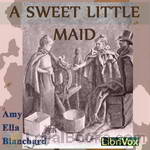 A Sweet Little Maid
A Sweet Little Maid
Dimple, the nine-year-old little girl is accustomed to being always the first. She has Bubbles, a little coloured girl as playmate and servant. One day Dimple’s cousin, Florence comes to visit her and they have a wonderful time together. But then come the rainy days and the two children easily get bored in the house… and that’s how the adventures and troubles begin. | |
By: Arthur B. Reeve (1880-1936) | |
|---|---|
 Poisoned Pen
Poisoned Pen
The many adventures of Professor Craig Kennedy were chronicled by Arthur B. Reeve (October 15, 1880 - August 9, 1936). Reeve was an American mystery writer who created 82 Craig Kennedy mystery stories. The stories have a very Sherlock Holmes type feel, In fact Kennedy has been referred to as the "American Sherlock Holmes". Along with his reporter friend, Walter Jameson, Kennedy solves many crimes and unveils mysteries using science. This book contains twelve of Professor Kennedy's adventures. The interesting thing about these stories is Kennedy uses newly discovered science from his time period, which we take for granted today... | |
By: James Brendan Connolly (1868-1957) | |
|---|---|
 The Trawler
The Trawler
The Trawler is a short story revolving around the trying life of a group of bank fishermen based in Gloucester. Skipper Hugh Glynn worked his men hard; some said too hard, and Arthur Snow was one who had paid the ultimate price.Arthur's close friend Simon Kippen decided he'd ask to take the place of his fallen friend aboard Hugh Glynn's vessel as a dory mate, and from there we have a tale of the open seas between Gloucester and Newfoundland where perhaps only the names and locations have changed from the countless stories of similar nature; the key being that this one, however, is first hand. | |
By: Frances Brooke | |
|---|---|
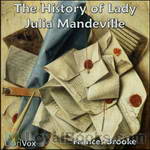 The History of Lady Julia Mandeville
The History of Lady Julia Mandeville
Lady Julia, the daughter of the Earl of Belmont, and Mr. Henry Mandeville are falling in love. Though Henry is like a family friend, this love is not welcomed because the Lady Julia is promised to someone else (or so Henry thinks). When they discover that they can be together after all, it is much too late. This novel, written in the form of letters, as are a lot of 18th century novels, shows their beautiful and echoing love story through the eyes of many people. | |
By: Daniel G. Brinton (1837-1899) | |
|---|---|
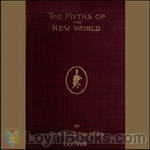 The Myths of the New World
The Myths of the New World
The Myths of the New World's full title describes it as.. " a treatise on the Symbolism and Mythology of the Red Race of America", an attempt to analyse and correlate scientifically, the mythology of the American Indians. Note: Brinton advocated theories of scientific racism that were pervasive at that time. | |
By: William E. B. Du Bois (1868-1963) | |
|---|---|
 The Quest of the Silver Fleece
The Quest of the Silver Fleece
The Quest of the Silver Fleece is a story of romance, race economics and politics set around the 1900s. Here, a traditionally educated boy and an unschooled “swamp girl” each begin a journey toward love, ambition and redemption in the “Old South.” | |
By: Captain Charles de Créspigny | |
|---|---|
 Where the Path Breaks
Where the Path Breaks
The soldier awakened from the brink of death eight months after his injury on the battlefield. As he slowly regained his senses and his memory, the face of a girl creeps into his mind, and he soon recalls that this girl had married him out of pity on the day he went into battle. The wedding had been a true "war wedding".".Inspired by the face and the vague recollections which were taking shape, and after learning that his day-bride had since remarried (believing her day-husband killed in action), the battle-scarred soldier decides to re-invent himself, take on a new name, and seek a new life... | |
By: Harriet Martineau (1802-1876) | |
|---|---|
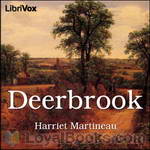 Deerbrook
Deerbrook
Like the later and more famous novel Middlemarch, Deerbrook describes the life of country people in a fictional English town. The Grey family live in one of the loveliest houses in Deerbrook, but a change in their lives is going to take place... The Ibbotson sisters, Hester and Margaret, orphaned distant cousins of Mr. Grey. Like in Jane Austen's novels, we see how the sisters are trying to advance themselves. In Victorian England, the chief way for women to "advance themselves" is to marry well. But will they succeed? And if they succeed, will they be happy? | |
By: Adalbert Stifter (1805-1868) | |
|---|---|
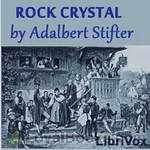 Rock Crystal
Rock Crystal
On Christmas Eve, two children, a brother and sister, leave their grandmother's house in an Alpine village and get lost in the mountain snow. They become trapped among the rock crystals of the frozen glacier. This short and gripping novel, by 19th century Austrian master Adalbert Stifter, influenced Thomas Mann and others with its suspenseful, simple, myth-like story and majestic depictions of nature. Poet W.H. Auden called the work "a quiet and beautiful parable about the relation of people to places, of man to nature."(Introduction by Greg W.) | |
By: Coulson Kernahan (1858-1943) | |
|---|---|
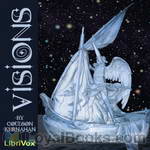 Visions
Visions
Deeper questions of life and death, and of God’s relationship to man, are explored in this collection of “dreams” by a noted English novelist and literary critic. A man takes an uncertain step into the next world as his life ends – Defendants at the Last Judgment hurl their own accusations at the Judge – An angel arrives on Christmas Eve to guide one soul through a night of despair and doubt – Flowers in a garden contemplate their own mortality – What would it mean if the world renounced Christ, or God took Christ away from the world? – And in a world of the future, pleasure and luxury are pursued … and children are nowhere to be found. (Introduction by D. Leeson) | |
By: Douglas Fairbanks (1883-1939) | |
|---|---|
 Laugh and Live
Laugh and Live
Douglas Fairbanks, Sr. (May 23, 1883 – December 12, 1939) was an American actor, screenwriter, director and producer. He was best known for his swashbuckling roles in silent films such as The Thief of Baghdad, Robin Hood, and The Mark of Zorro. His book, Laugh and Live, is a book about positive virtues and advice for leading a good, healthy, and successful life. An advisory about this book is in order. Published in 1917, it was written at a time when “men went to work, women kept house, and supported their man”... | |
By: Katharine Newlin Burt (1882-1977) | |
|---|---|
 Snow-Blind
Snow-Blind
A bit of a menage-a-quatre in a remote cabin in the wilderness as fugitive Hugh, his younger brother Pete, nursemaid and cook Bella, and now the newly arrived snow-blinded young Sylvie who had been snatched from near death in the snow by the heroic but moody Hugh. Because of her blindness, Sylvie is led to believe her rescuer to be a handsome and dashing hero; his younger brother to be but a young lad of 14; and Bella a matronly old maid. But Sylvie would, in time, form her own image of the clan and attempt to bring them together as they were destined to be split apart... | |
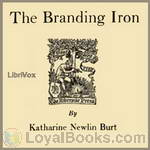 The Branding Iron
The Branding Iron
From the cold and mountainous regions of Wyoming to the bright lights of the big city, The Branding Iron is the story of a remarkable woman, Joan Carver. Born of poor means, at a fairly young age Joan decides to leave her father and strike out on her own, but she is to face more difficulties and hardships than she had reckoned for, and the men she encounters on her way share different means of dealing with her; and she of them. She becomes her own individual, with a strong will and a determination to lead her life as she sees fit. As with many of Ms. Burt's stories, The Branding Iron is filled with unexpected surprises at each turn. | |
By: Bjørnstjerne Bjørnson (1832-1910) | |
|---|---|
 Happy Boy
Happy Boy
"A Happy Boy" was written in 1859 and 1860. It is, in my estimation, Bjørnson's best story of peasant life. In it the author has succeeded in drawing the characters with remarkable distinctness, while his profound psychological insight, his perfectly artless simplicity of style, and his thorough sympathy with the hero and his surroundings are nowhere more apparent. This view is sustained by the great popularity of "A Happy Boy" throughout Scandinavia. (From the Preface) Bjørnstjerne Bjørnson received the Nobel Prize in Literature in 1903. | |
By: Vaughan Kester (1869-1911) | |
|---|---|
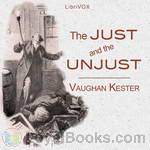 The Just And The Unjust
The Just And The Unjust
Framed for a murder he did not commit, John North must rely on his friends to help clear him of the charge. But, are they really his friends? Many have dirty little secrets they wish to keep private, even at the expense of John North’s life. Ironically, those keeping quiet include members of the legal profession. Only one drunken man knows the true identity of the killer but he has mysteriously disappeared. Deceit and betrayal flourish in this story, with a tense conclusion. (Introduction by Tom Weiss) | |
By: Clarence Darrow (1857-1938) | |
|---|---|
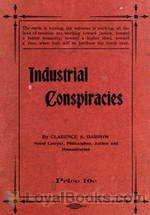 Industrial Conspiracies
Industrial Conspiracies
| |
By: Hans Aanrud (1863-1953) | |
|---|---|
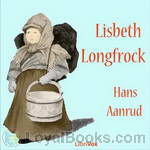 Lisbeth Longfrock or Sidsel Sidsærkin
Lisbeth Longfrock or Sidsel Sidsærkin
Lisbeth Longfrock - (Sidsel Sidsærkin in its original Norwegian) was seen by the author as a book written for adults, telling the story of a young girl growing up in a farming district in a steep-sided Norwegian Valley. It was first written when the author's daughter was 8 years old, the age of Lisbeth when the book begins, so she would know about his childhood spent in similar surroundings, living on a farm and spending summer in charge of the cows and goats on the mountain pastures. | |
By: Pansy (1841-1930) | |
|---|---|
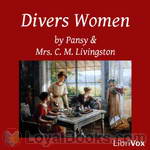 Divers Women
Divers Women
A collection of short stories, highlighting some of the best and worst characteristics we women are capable of in our Christianity and in our home life. | |
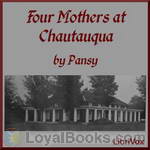 Four Mothers at Chautauqua
Four Mothers at Chautauqua
Final book in the Chautauqua Girls series. The four original girls return to Chautauqua on the 25 year anniversary of the trip that changed their lives forever. They have with them some children that could use the lessons they themselves learned there. (Introduction by TriciaG)Music for the hymn in Chapters 9 & 26 is titled "Chautauqua" by William, F. Sherman, 1877. Music for the children's song in Chapter 19 is adapted from "Love Lifted Me" by Howard E. Smith, 1912. | |
By: William Henry Pope Jarvis (1876-1944) | |
|---|---|
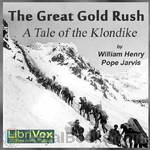 The Great Gold Rush: A Tale of the Klondike
The Great Gold Rush: A Tale of the Klondike
Canadian journalist William Jarvis' gently fictionalized work recounts many of the countless fascinating tales of the Klondike Gold Rush in Canada's Yukon. (Introduction by Cathy Barratt) | |
By: Jessie Graham Flower (-1931) | |
|---|---|
 Grace Harlowe's Golden Summer
Grace Harlowe's Golden Summer
The College Girls Series sees the friends part ways: Grace, Anne, and Miriam depart for Overton College, while Jessica and Nora attend a conservatory. The Eight Originals gather on holidays, but the seven College books focus on the three at Overton, along with new friends like J. Elfreda Briggs. They form Semper Fidelis, a society devoted to aiding less fortunate students at Overton. Following graduation, Grace rebuffs offers of marriage for "what she had firmly believed to be her destined work," managing Harlowe House at Overton. | |
 Grace Harlowe's Return to Overton Campus
Grace Harlowe's Return to Overton Campus
The four series follow Grace Harlowe and her friends through high school, college, abroad during World War I, and on adventures around America. In The High School Girls Series, Grace attends Oakdale High School with friends Anne Pierson, Nora O'Malley, and Jessica Bright. The four promote fair play and virtue while winning over troubled girls like Miriam Nesbit and Eleanor Savell, playing basketball, and founding sorority Phi Sigma Tau. The group becomes friends with boys in their acquaintance: David Nesbit, Tom Gray, Hippy Wingate, and Reddy Brooks, forming "The Eight Originals... | |
 Grace Harlowe's Problem
Grace Harlowe's Problem
The four series follow Grace Harlowe and her friends through high school, college, abroad during World War I, and on adventures around America. The College Girls Series sees the friends part ways: Grace, Anne, and Miriam depart for Overton College, while Jessica and Nora attend a conservatory. The Eight Originals gather on holidays, but the seven College books focus on the three at Overton, along with new friends like J. Elfreda Briggs. They form Semper Fidelis, a society devoted to aiding less fortunate students at Overton. Following graduation, Grace rebuffs offers of marriage for "what she had firmly believed to be her destined work," managing Harlowe House at Overton. | |
By: Emilie Maceroni (1813-1868) | |
|---|---|
 Magic Words: A Tale for Christmas Time
Magic Words: A Tale for Christmas Time
Magic Words is a Victorian tale of a community and how a few women bring a special kind of Christmas magic to the community-- Magic that can heal wounded hearts. (Introduction by Sean McGaughey) | |
By: William Wells Brown (1814-1884) | |
|---|---|
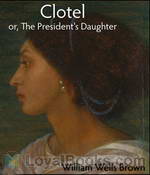 Clotel, or, The President's Daughter
Clotel, or, The President's Daughter
Clotel; or, The President's Daughter is a novel by William Wells Brown (1815-84), a fugitive from slavery and abolitionist and was published in London, England in December 1853. It is often considered the first African-American novel. This novel focuses on the difficult lives of mulattoes in America and the "degraded and immoral condition of the relation of master and slave in the USA" (Brown). It is about the tragic lives of Currer, Althesea, and Clotel. In the novel, Currer is the former mulatto mistress of President Thomas Jefferson who together have two daughters, Althesea and Clotel... | |
By: Dinah Maria Mulock Craik (1826-1887) | |
|---|---|
 Fairy Book
Fairy Book
The sleeping beauty in the wood -- Hop-O'-My-Thumb -- Cinderella; or, the little glass slipper -- Adventures of John Dietrich -- Beauty and the Beast -- Little One Eye, Little Two Eyes, and Little Three Eyes -- Jack the giant-killer -- Tom Thumb -- Rumpelstilzchen -- Fortunatus -- The Bremen Town Musicians -- Riquet with the tuft -- House Island -- Snow-White and Rose-Red -- Jack and the bean-stalk -- Graciosa and Percinet -- The iron stove -- The invisible prince -- The woodcutter's daughter --... | |
By: Noah Lott | |
|---|---|
 The Silly Syclopedia
The Silly Syclopedia
A Terrible Thing in the Form of a Literary Torpedo which is Launched for HILARIOUS PURPOSES ONLY. Inaccurate in Every Particular Containing Copious Etymological Derivations and Other Useless Things by Noah Lott (an ex-relative of Noah Webster) | |
By: Émile Gaboriau (1832-1873) | |
|---|---|
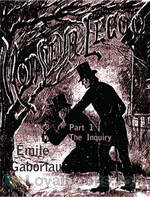 Monsieur Lecoq: The Inquiry
Monsieur Lecoq: The Inquiry
Monsieur Lecoq is a captivating mystery, historical and love story : Around 11 o'clock, on the evening of Shrove Sunday 18.., close to the old Barrière d'Italie, frightful cries, coming from Mother Chupin's drinking-shop, are heard by a party of detectives led by Inspector Gévrol. The squad runs up to it. A triple murder has just been committed. The murderer is caught on the premises. Despite Gévrol's opinion that four scoundrels encountered each other in this vile den, that they began to quarrel, that one of them had a revolver and killed the others, Lecoq, a young police agent, suspects a great mystery... | |
By: Dinah Craik (1826-1887) | |
|---|---|
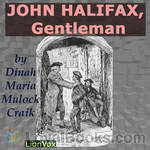 John Halifax, Gentleman
John Halifax, Gentleman
This novel, published in 1856, was one of the popular and beloved novels in the Victorian era. It is told in the first person by Phineas Fletcher, an invalid son of a Quaker tanner who is presented to us in the beginning as a lonely youth. John Halifax, the first friend he ever had, is a poor orphan who is taken in by his father to help in the work which his sickly son can't constantly do. Phineas tells us in an unforgettable way how John succeeded in rising from his humble beginning and become a wealthy and successful man. But with the money come horrible troubles... In an unforgettable manner, we learn to know all the characters of the novel as if they really lived. | |
By: L. Adams Beck (1862-1931) | |
|---|---|
 The ninth vibration and other stories
The ninth vibration and other stories
This is a collection of the following short stories: The Ninth Vibration -- The Interpreter : A Romance of the East -- The Incomparable Lady : A Story of China with a Moral -- The Hatred of the Queen : A Story of Burma -- Fire of Beauty -- The Building of the Taj Majal -- How Great is the Glory of Kwannon! -- The Round-Faced Beauty. Many of them are romantic, some of them are fantasy and others are occult fiction.(Introduction by Linda Andrus) | |
By: Rex Beach (1877-1949) | |
|---|---|
 Silver Horde
Silver Horde
The Silver Horde , is set in Kalvik, a fictionalized community in Bristol Bay, Alaska, and tells the story of a down on his luck gold miner who discovers a greater wealth in Alaska's run of salmon (silver horde) and decides to open a cannery. To accomplish this he must overcome the relentless opposition of the "salmon trust," a fictionalized Alaska Packers' Association, which undercuts his financing, sabotages his equipment, incites a longshoremen's riot and bribes his fishermen to quit. The story line includes a love interest as the protagonist is forced to choose between his fiance, a spoiled banker's daughter, and an earnest roadhouse operator, a woman of "questionable virtue." | |
 Flowing Gold
Flowing Gold
Unfairly given a dishonorable discharge from the army, Calvin Gray goes to Dallas, where he manages to win the trust of a jeweler and is able to sell a number of diamonds to the newly oil rich Briskows. He makes friends with the family and helps them adjust to their newly found riches. The Briskows, in turn, help him prove false the charges that caused his dismissal from the army. | |
By: Kate Douglas Wiggins (1856-1923) | |
|---|---|
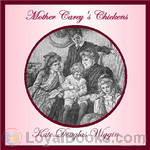 Mother Carey’s Chickens
Mother Carey’s Chickens
“When Captain Carey went on his long journey into the unknown and uncharted land, the rest of the Careys tried in vain for a few months to be still a family, and did not succeed at all. They clung as closely to one another as ever they could, but there was always a gap in the circle where father had been….. The only thing to do was to remember father's pride and justify it, to recall his care for mother and take his place so far as might be; the only thing for all, as the months went on, was to be what mother called the three Bs -- brave, bright, and busy... | |
By: Robert J. Burdette (1844-1914) | |
|---|---|
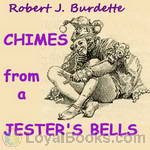 Chimes From A Jester’s Bells
Chimes From A Jester’s Bells
Part I. The Story of Rollo; Mr. Holliday knows all there is to know about raising children, or at least he thinks he does. His attempts to train his son, Rollo, "in the way he should go," are well-meant, but hilariously unsuccessful--or are they? I believe this is a sort of spoof of the “Rollo” series for children, that was written by Jacob Abbot in the mid 19th century. The characters have the same names and the chapters have a little Q&A at the end like the Abbot books, except these are definitely tongue-in-cheek... | |
By: Dolf Wyllarde | |
|---|---|
 The Pathway of the Pioneer
The Pathway of the Pioneer
The story of seven girls who have banded themselves together for mutual help and cheer under the name of “Nous Autres.” They represent, collectively, the professions open to women of no deliberate training, though well educated. They are introduced to the reader at one of their weekly gatherings and then the author proceeds to depict the home and business life of each one individually. (From the 1909 back-of-book advertisement) | |
By: Carolyn Steward Taylor | |
|---|---|
 Werewolf -- Five Pieces
Werewolf -- Five Pieces
Five stories and essays about werewolves. | |
By: Laurence M. Janifer (1933-2002) | |
|---|---|
 Supermind
Supermind
FBI agent Kenneth Malone lives in a world where psionic powers such as telepathy and teleportation exist. He must cope with them as well as an FBI Director who leaves Malone continually confused about what situation he is being asked to handle and what he is expected to do about it. Someone or something is causing confusion in the U.S. Government, Unions, The Mafia, and other sectors of society and Malone has been given the job of finding the source of the confusion. A good story composed of science fiction and slap stick comedy with a bit of romance thrown into the mix. | |
By: William Carleton (1794-1869) | |
|---|---|
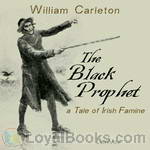 The Black Prophet - A Tale of Irish Famine
The Black Prophet - A Tale of Irish Famine
A story about the Irish, just before the onset of the famine of 1847, with all the color and dialogue of a man who lived it. | |
By: Arthur Morrison (1863-1945) | |
|---|---|
 A Child of the Jago
A Child of the Jago
Arthur George Morrison (1 November 1863, Poplar, London - 4 December 1945, Chalfont St Peter, Buckinghamshire) was an English author and journalist known for his realistic novels about London's East End and for his detective stories. Morrison's most famous novel is A Child of the Jago, published in 1896, The novel described in graphic detail living conditions in the East End, including the permeation of violence into everyday life (it was a barely fictionalized account of life in the Old Nichol Street Rookery). (Introduction by Wikipedia and Algy Pug) | |
By: David Garnett (1892-1981) | |
|---|---|
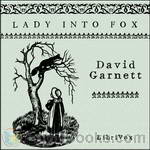 Lady into Fox
Lady into Fox
When Sylvia Tebrick, the 24-year-old wife of Richard Tebrick, suddenly turns into a fox while they are out walking in the woods, Mr. Tebrick sends away all the servants in an attempt to keep Sylvia's new nature a secret. Both then struggle to come to terms with the problems the change brings about. | |
By: Harold L. Goodwin (1914-1990) | |
|---|---|
 Rip Foster Rides the Gray Planet
Rip Foster Rides the Gray Planet
"Foster, Lieutenant, R. I. P.," blared the voice horn, and five minutes later Rip Foster was off into space on an assignment more exciting than any he had ever imagined. He could hardly believe his ears. Could a green young Planeteer, just through his training, possibly carry out orders like these? Sunny space, what a trick it would be! From the moment Rip boards the space ship Scorpius there is a thrill a minute. He and his nine daring Planeteers must cope with the merciless hazing of the spacemen commanding the ship, and they must outwit the desperate Connies, who threaten to plunge all of space into war... | |
 Smugglers' Reef
Smugglers' Reef
Seventh entry in the Rick Brant Science Mystery Adventure series has Rick and buddy Scott using infrared technology on the trail of smuggling no-goodniks in the vicinity of Spindrift Island, Rick's home and location of his dad's laboratory, off the New Jersey & New York coast. | |
By: Charles Alexander Eastman (1858-1939) | |
|---|---|
 Indian Child Life
Indian Child Life
The author was raised as an American Indian and describes what it was like to be an Indian boy (the first 7 chapters) and an Indian Girl (the last 7 chapters). This is very different from the slanted way the white man tried to picture them as 'savages' and 'brutes.'Quote: Dear Children:—You will like to know that the man who wrote these true stories is himself one of the people he describes so pleasantly and so lovingly for you. He hopes that when you have finished this book, the Indians will seem to you very real and very friendly... | |
By: Pauline Elizabeth Hopkins (1859-1930) | |
|---|---|
 Contending Forces
Contending Forces
Pauline Elizabeth Hopkins, despite an impressive record of productivity and creativity as a novelist, playwright, short fiction writer, editor, actress, and singer, is an African-American woman writer who has essentially been consigned to the dustbins of American literary history. Though contemporary with Frances Ellen Watkins Harper, Charles W. Chesnutt, and Paul Laurence Dunbar, Hopkins is only now beginning to receive the kind of critical attention that Harper has enjoyed for a slightly longer period and that Chesnutt and Dunbar have always had... | |
By: Mary T. Waggaman (1846-1931) | |
|---|---|
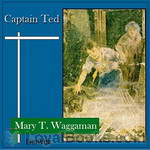 Captain Ted
Captain Ted
When tragedy hits his family, in the form of a sudden illness to his father, young Teddy Thornton is forced to leave school and find work to help support his family. Without his realization he is thrown into a world of crime and counterfeiting. Will he do the right thing, or will he unwittingly be drawn down the wrong path? And will the mystery of Heron Hall be solved? | |
By: F. M. Mayor (1872-1932) | |
|---|---|
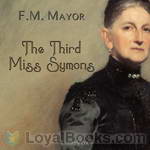 The Third Miss Symons
The Third Miss Symons
Miss Mayor tells this story with singular skill, more by contrast than by drama, bringing her chief character into relief against her world, as it passes in swift procession. Her tale is in a form becoming common among our best writers; it is compressed into a space about a third as long as the ordinary novel, yet form and manner are so closely suited that all is told and nothing seems slightly done, or worked with too rapid a hand. | |
By: Thomas Beer | |
|---|---|
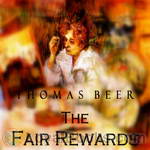 The Fair Rewards
The Fair Rewards
"The Fair Rewards" by Thomas Beer . . . is a really distinguished novel. The writing is far above the average: it has style and sophistication and personality, intermingled with a truly vivid show of imagination. It even borders on brilliancy, but it is a hard, cold, cynical sort of brilliancy that chills. It almost hurts . . . The title itself is indicative of cynicism. It is derived from Shakespeare's quotation, "These be the fair rewards of those that love," and it is an ironical reference, for Mark Walling, the blind, simple, loving idolater, in return for his great and unselfish devotion to Margot, reaps selfishness and ingratitude and lack of consideration... | |
By: Francis Coventry (1725-1754 or 1759) | |
|---|---|
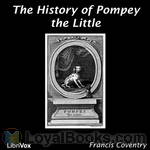 The History of Pompey the Little
The History of Pompey the Little
"Pompey, the son of Julio and Phyllis, was born A.D. 1735, at Bologna in Italy, a place famous for lap-dogs and sausages." At an early age he was carried away from the boudoir of his Italian mistress by Hillario, an English gentleman illustrious for his gallantries, who brought him to London.The rest of the history is really a chain of social episodes, each closed by the incident that Pompey becomes the property of some fresh person. In this way we find ourselves in a dozen successive scenes, each strongly contrasted with the others... | |
By: Cyrus Townsend Brady (1861-1920) | |
|---|---|
 And Thus He Came
And Thus He Came
These short stories, perhaps we might call them modern parables, are not the usual fare of warm and fuzzy Christmas stories (pleasing as those are) but rather life events and crises triggered by Christmas, present or imminent. Brady was a journalist, historian, adventure writer, and Episcopal priest. | |
By: Alice B. Emerson | |
|---|---|
 Ruth Fielding of the Red Mill
Ruth Fielding of the Red Mill
Brave, adventurous and loyal, recently-orphaned Ruth Fielding is sent to live with her estranged Uncle Jabez at the Red Mill in Cheslow, New York. A new town means making new friends, and the teenage Ruth quickly befriends the children of a wealthy merchant. But as the relationship between her and her uncle becomes strained and she attempts to become friends with a very disagreeable girl, will Ruth's cheery disposition be enough to get her through?This is the first of the Ruth Fielding series, with follows Ruth and her friends from adolescence into early adulthood. | |
 Ruth Fielding at Briarwood Hall
Ruth Fielding at Briarwood Hall
In this, the second book of the Ruth Fielding series, Ruth goes to boarding school with her best friend Helen. When they get there, Ruth starts her own sorority called the SweetBriars for the new girls. Her sweet group of girls conflicts with the two other sororities the Upedes and the Fussy Curls. In the midst of settling in to the new place, there is a campus rumor about a legend of the marble harp playing ominously at night. But when the French teacher is in a fright, will Ruth be able to solve this mystery?The Ruth Fielding series has influenced several other major series that came later, including Nancy Drew, the Dana Girls, and Beverly Gray. | |
By: Frances Trego Montgomery (1858-1925) | |
|---|---|
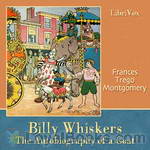 Billy Whiskers, the Autobiography of a Goat
Billy Whiskers, the Autobiography of a Goat
This delightful children's story can be enjoyed by kids and adults alike! A mischievous goat, Billy Whiskers, gets into trouble so often that the book could be named, "Billy Trouble Whiskers"! This humorous story will bring you many chuckles and give you a chance to get lost in Billy's adventures with childlike enthusiasm. From riding in a police car, to being a firehouse mascot, getting married, and finding himself a circus goat, Billy's adventures will certainly keep you entertained! (Introduction by Allyson Hester) | |
By: Zoe Anderson Norris | |
|---|---|
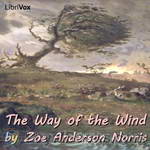 The Way of the Wind
The Way of the Wind
From the comfort of the hills of Kentucky traveled Celia and her husband Seth to the desolate prairies of Kansas, where cyclones, tornadoes, and endless wind were to greet them. Always, there was the wind cutting across the plains as the young couple builds their home while working the soil, while Seth awaits the wise men of the east to begin building the magic city where he has staked his territory on the plains. But sometimes life plays cruel tricks upon us. Sometimes our hopes are dashed by happenstance... | |
By: Susanna Rowson (1762-1824) | |
|---|---|
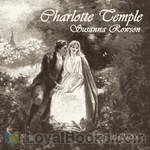 Charlotte Temple
Charlotte Temple
Charlotte Temple, a cautionary tale for young women, follows the unfortunate adventures of the eponymous heroine as she is seduced by a dashing soldier, Montraville. Influenced by both her lover and an unruly teacher at her boarding school, she is persuaded to run away to America, where she is eventually abandoned by Montraville after he becomes bored, leaving her alone and pregnant. First published in England in 1791, it went on to become America's bestselling novel, only being ousted by Harriet Beecher Stowe's Uncle Tom's Cabin. | |
By: Jim Kjelgaard (1910-1959) | |
|---|---|
 The Black Fawn
The Black Fawn
Bud Sloan was an orphan who had been 'sold out' of the orphanage to work on a farm once he'd been old enough to labor. The farm where he was to work was owned by an aging farmer and his wife who had raised a large family and were now left alone. One day, after his chores were done, Bud wandered into the woods nearby and with mouth agape, he noticed a newborn jet black fawn all alone and apparently confused in his new surroundings. Bud resolved that day that this baby fawn was just like himself, an orphan, and would be bound to him in spirit... | |
By: Percy Marks (1891-1956) | |
|---|---|
 The Plastic Age
The Plastic Age
The Plastic Age (1924) is a novel by Percy Marks, which tells the story of co-eds at a fictional college called Sanford. With contents that covered or implied hazing, partying, and "petting", the book sold well enough to be the second best-selling novel of 1924. The following year, it was adapted into a film of the same name, starring Clara Bow. | |
By: Leonid Nikolayevich Andreyev (1871-1919) | |
|---|---|
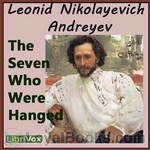 The Seven Who Were Hanged
The Seven Who Were Hanged
"I am very glad that "The Story of the Seven Who Were Hanged" will be read in English. The misfortune of us all is that we know so little, even nothing, about one another—neither about the soul, nor the life, the sufferings, the habits, the inclinations, the aspirations of one another. Literature, which I have the honor to serve, is dear to me just because the noblest task it sets before itself is that of wiping out boundaries and distances."-- Leonid Andreyev, in a letter to Herman Bernstein | |
By: Sōseki Natsume (1867-1916) | |
|---|---|
 Botchan
Botchan
Botchan is the story of a young math teacher from Tokyo whose first assignment takes him to a middle school in the country side. His arrival there is not very lucky: The pupils are bound to test his perseverance and cheerily comments every one of his perceived missteps. In the teacher's room, he soon finds himself in the middle of an intrigue between the jovial "Porcupine" and the fat "Hubbard Squash" on one side, and the effeminate "Red Shirt" and his follower "Clown" on the other. Will Botchan choose the right side in the end? Botchan - with morality as the main theme - is one of the most popular novels in Japan... | |
By: H. C. Bailey (1878-1961) | |
|---|---|
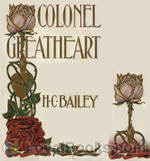 Colonel Greatheart
Colonel Greatheart
This is an unusual story of the English Civil War. There is a good account of the Battle of Newbury, and many historic figures appear: Cromwell (very prominent), Ireton, Prince Rupert, Charles I, Fairfax, and Lambert. The setting for this tale of men and arms is taken from the stirring days of the Bavaliers and the Roundheads, of Puritans and the so-called malignants; but the machines of war are rather in the background, while in the spotlight is a witching woman, a conqueror of hearts and a marker of destinies. The story tells of a woman's ambition that "urges valiant men to perilous deeds". | |
By: John Neihardt | |
|---|---|
 The Song of Hugh Glass
The Song of Hugh Glass
This poem tells a story that begins in 1823 - just after the Leavenworth campaign against the Arikara Indians - and follows an expedition of Major Andrew Henry during a series of arduous journeys over the Trans-Missouri region.The poem focuses upon the relationship between two trappers - Hugh Glass and Jamie - who, after fighting and hunting together, consequently develop a close friendship. The poem revolves around the betrayal of Hugh by Jamie: who leaves Hugh alone "as good as dead" to die by the Missouri... | |
By: Edward Everett Hale (1822-1909) | |
|---|---|
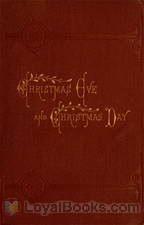 Christmas Eve and Christmas Day
Christmas Eve and Christmas Day
This is a collection of ten Christmas Stories, some of which have been published before. I have added a little essay, written on the occasion of the first Christmas celebrated by the King of Italy in Rome. | |
 Man Without A Country And Other Tales
Man Without A Country And Other Tales
Edward Everett Hale (1822 – 1909) was an American author, historian and Unitarian clergyman. Hale first came to notice as a writer in 1859, when he contributed the short story "My Double and How He Undid Me" to the Atlantic Monthly. He soon published other stories in the same periodical. His best known work was "The Man Without a Country", published in the Atlantic in 1863 and intended to strengthen support in the Civil War for the Union cause in the North. Though the story is set in the early 19th century, it is an allegory about the upheaval of the American Civil War... | |